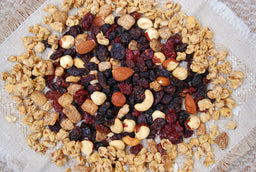
Why Recovery After Rucking Is Non-Negotiable
Rucking isn’t your average walk in the park — it’s a physically demanding, high-output activity that taxes the body in ways many gym-goers aren’t ready for. You wouldn’t hit heavy deadlifts three days in a row without expecting your performance to tank. So why do people treat rucking any differently?
The truth is, rucking often burns more calories and stresses more muscle groups than your typical gym session. In fact:
- A 180lb person can burn up to 650 calories per hour rucking with a 15kg load.
- By comparison, that same person might burn around 430 calories per hour doing a general weightlifting session.
That’s a massive energy demand — and it's not just cardiovascular. Your traps, shoulders, glutes, hamstrings, calves, and core are working overtime under a weighted load. That’s why strategic recovery isn’t optional — it’s essential.
The Importance of Recovery After Rucking
When you ruck hard, you create micro-tears in your muscles, deplete energy stores, and push your central nervous system. Recovery allows the body to:
- Repair muscle fibres, which is what leads to strength gains and endurance adaptation.
- Replenish glycogen stores so you’re not dragging your feet the next day.
- Rebuild connective tissue, which takes even longer than muscle to repair.
Neglecting recovery doesn’t just slow your progress — it opens the door to chronic fatigue, increased injury risk, and weakened muscles over time. That’s not building resilience. That’s digging yourself into a hole.
The Downside of Skipping Recovery
Pushing through back-to-back ruck sessions without adequate downtime can lead to:
- Overtraining Syndrome – marked by decreased performance, irritability, and disrupted sleep.
- Increased cortisol levels – which can burn muscle rather than build it.
- Joint inflammation – particularly in the knees, hips, and lower back.
You're not getting tougher by ignoring recovery — you're sabotaging the engine that powers your progress.
A Smarter Rucking Schedule
Here’s how a balanced rucking week might look:
|
Day |
Activity |
|
Monday |
Moderate ruck (30–45 mins, 20–30lb) |
|
Tuesday |
Active recovery (mobility, light walk) |
|
Wednesday |
Interval rucking (20 mins hard pace) |
|
Thursday |
Full rest or yoga/stretching |
|
Friday |
Long ruck (60+ mins, heavier load) |
|
Saturday |
Active recovery or cross-training |
|
Sunday |
Rest or light bodyweight workout |
Tip: Use a quality weighted vest or rucking pack that distributes weight evenly — poor gear can increase strain and slow recovery.
Recovery Tactics That Work
- Sleep: Nothing replaces quality sleep for muscle recovery.
- Nutrition: Prioritise protein and carbs post-ruck to refuel and rebuild.
- Hydration: You're sweating more than you realise — don’t skimp on water or electrolytes.
- Mobility work: Stretching, foam rolling, and walking on off-days helps flush out soreness.
Rucking is tough. That’s the point. But getting stronger requires smart recovery. Treat your downtime like part of the training — not an optional bonus. You’ll go further, feel better, and stay in the fight longer. Don't forget to check out the online store for rucking backpacks and weighted vests!


















